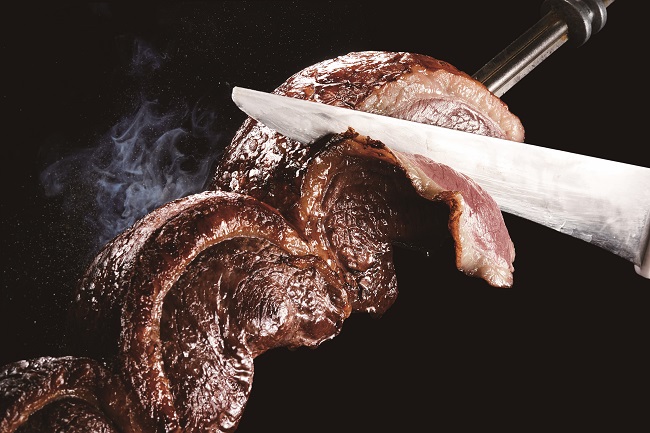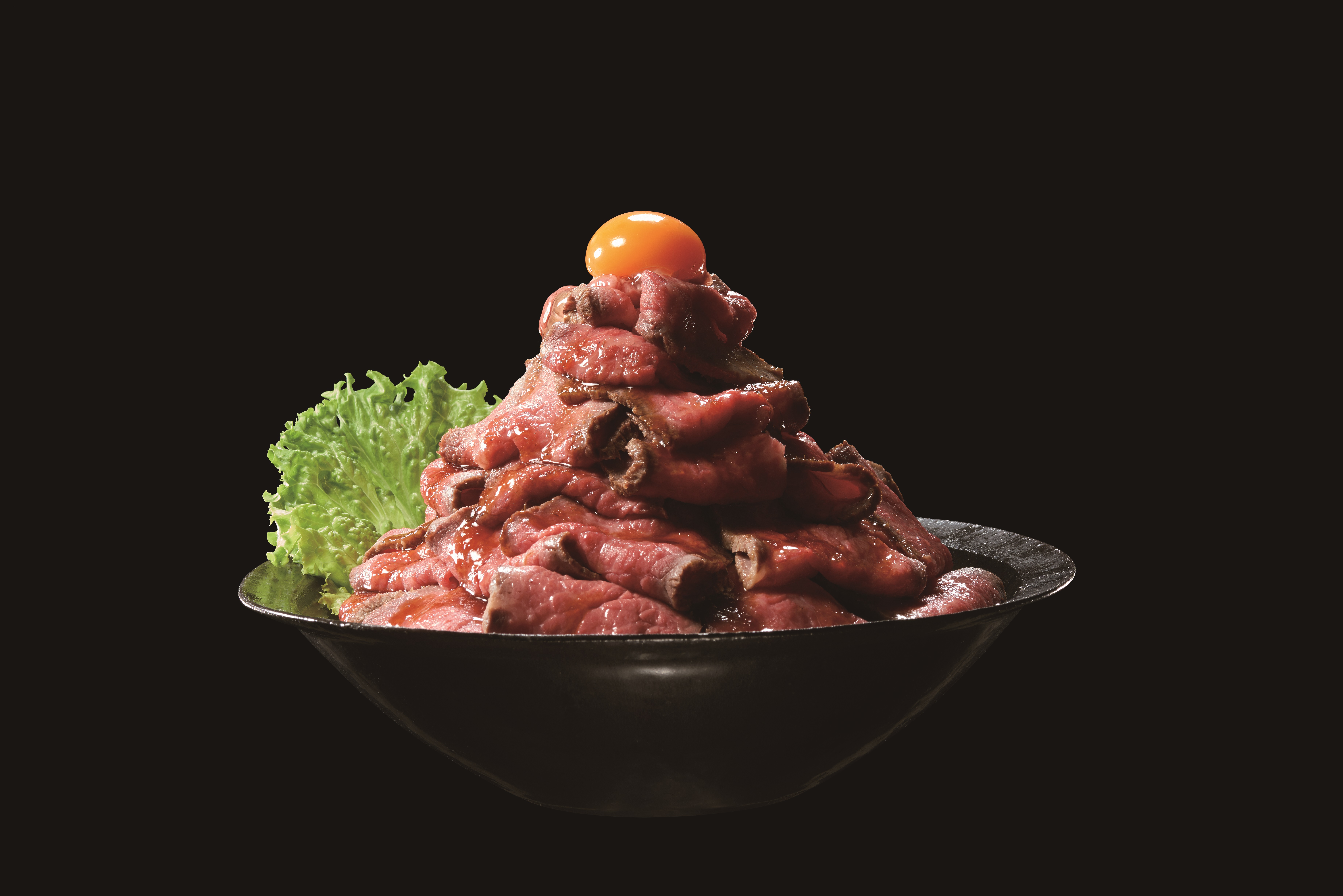"Pakchee (Coriander) Cuisine" chosen as 2016 Dish of the Year!
Handing down Japanese food culture to future generations
Gurunavi Research Institute (GRI: Chiyoda-ku, Tokyo; Hisao Taki, president and representative director), which conducts a variety of surveys and research efforts primarily on food-related themes, has selected "Pakchee (Coriander) Cuisine" as its Dish of the Year for 2016. The selection reflects the valued place that coriander, known in Japan as pakchee, has established for itself in Japanese food culture.
【2016 "Dish of the Year®" Sponsors】
Sponsorship: Gurunavi Research Institute
Co-Sponsorship: Gurunavi,Inc.
Endorsement: Ministry of Agriculture, Forestry and Fisheries
Japan Tourism Agency
(Ministry of Land, Infrastructure, Transport and Tourism)
Dish of the Year 2016
Pakchee (Coriander) Cuisine

In addition to the latest trends and topics, the Dish of the Year selection is also deeply relevant to societal developments and broad trends for the year. As a mirror on contemporary society, it has even greater value in its function as a memorial to food culture that can be handed down through the generations, and is selected on that basis. We have held our annual Dish of the Year event since 2014 to memorialize and preserve our human heritage represented in the finest of Japanese food culture. The 2016 Dish of the Year selection process is based on the big data searched by 57 million monthly users who accessed Gurunavi website and the questionnaire result for 14.48 million Gurunavi members. Media committees selected 15 nominated dishes, and the final selection of Pakchee (Coriander) Cuisine was made by GRI.
Taking the scientific designation apiaceae coriandrum, pakchee, is characterized by a rich herbal aromatic bouquet. Known as pakchee in Thai and Japanese cuisines, coriander is also known as shanzai in Chinese. It is used widely in various cuisines such as Thai, Vietnamese, Chinese, Portuguese, Mexican and Indian. In Japan, Shizuoka and Okayama are among the best known pakchee-producing areas.
【Reasons for selection】
Previously confined to use as an "ethnic" condiment and seasoning, coriander has in recent years transcended this food industry categorization, and now takes the lead role in various dishes. Many restaurants have introduced a succession of diverse new dishes including coriander salads, hotpot meals, cocktails and desserts.
So many consumers are finding themselves attracted by coriander’s taste and aroma that the new Japanese word pakuchisuto (i.e., "pakchee-ist") has been coined to describe Japan’s pakchee devotees.
As relatively easy cultivation helped boost domestic production, coriander became widely available in stores. Major food manufacturers have followed with commercial development of various related seasonings, instant foods and snacks, bringing the herb into widespread use in Japanese households.
Given the growing consumer preference for healthy, attractive foods, interest in coriander’s high nutritional value has also grown. It is expected to be among vegetables that are increasingly adopted as a centerpiece of daily meals.
*Please see appendix for media committee details.
**The 15 key words designating the nominated food items are:
"Ise-Udon," "Beef Cutlet," "Kumamoto Ramen," "Churrasco," "Whitebaite bowl," "Innovative Gyoza," "Chopped Salad," "Pakchee(Coriander) Cuisine," "Roast Beef Bowl," "Caffeine-free Drinks," "Functional Chocolate," "High-carbonated Drinks," "Amazake Sweet Malted Rice," "Coffee" and "Japanese Wine."
Please refer to appendix for more details on the research data by GRI for the nominated dishes.
Runner Up
Japanese Wine
The National Tax Agency defines Japanese wine as "fruit liquor made from domestic grapes only and manufactured in Japan." This distinguishes it from domestically manufactured wine using overseas ingredients such as concentrated fruit juice.

【Reasons for selection】
Consumer interest in purely domestic Japanese wine has been piqued since October 2015, when the government formulated its first labeling rules that make the distinction clear. The rules, which take effect on October 30, 2018, set standards for labeling that clarify designations of manufacturing quality. Japanese wines have received high marks both domestically and overseas, when served to heads of state at the "Ise Summit" held in Mie prefecture in May, and in winning high honors at the world's largest international wine competition. Their reputation is expected to improve even further in the future.
National bond award
Churrasco
This dish of Brazil and other South American countries consists of meat pierced by an iron skewer, seasoned with coarse salt and cooked to perfection.

【Reasons for selection】
It attracted attention as a dish of the host country of the Rio de Janeiro Olympic and Paralympic Games, and its recognition thus spread among Japanese consumers.
While Churrasco was available only at a limited number of specialty restaurants before, many more are now introducing it to their menus.
Special award
Sweet Malted Amazake
Amazake is classified into two categories according to the ingredients used. Amazake made from malted rice is a mixture of rice porridge with the malted grain, then incubated and fermented. In the process of fermentation, some of the rice starch decomposes into glucose, which gives rise to natural sweetness in this non-alcoholic beverage. Amazake made from sake lees is a direct by-product of sake brewing, and contains a small amount of alcohol. The lees are simply dissolved into hot water, with a sweetener such as sugar.

【Reasons for selection】
The current worldwide fermented food trend has led to a reevaluation of koji, a fungal culture and key element of several traditional Japanese foods. At the same time, the use of drip infusion has became a hot topic, drawing attention to the enormous nutritional value of koji.
Due to the heat weave this year, food makers have offered chilled sweet amazake for hydration and supplemental nutrition ideal for summer. New menus using sweet amazake were also introduced in the restaurant industry.
Innovative Gyoza
Beyond the traditional ingredient concept (pork, chives, cabbage), new styles of gyoza have been invented with various ingredients and more creative freedom. Soy sauce, pepper oil and rice vinegar have been popular for a long time in dipping sauces, but new Western-style sauces and ethnic spices are becoming popular.

【Reasons for selection】
Fashionable gyoza dumpling restaurants that serve the dish matched with wine have increased, and have become popular among female diners– a key consumer demographic.
Gyoza dumplings, long popular as a second-tier gourmet treat, have more recently been refined in taste, quality, and appearance. And their presence has increased as a result.
Roast Beef bowl
A rice bowl with plenty of sliced roasted beef on top, this dish is characterized by its soy-based sauce that goes well with rice, as opposed to the gravy-type sauces traditionally used with roast beef.

【Reasons for selection】
Formerly considered an occasional luxury item, roast beef was transformed into a familiar, widely available dish through the combination with rice and soy sauce familiar to Japanese people.
SNS was used innovatively to disseminate information and publicize this dish with attractive photos. Consumers flocked to specialty restaurants and waited in long lines every day for a hearty Roast Beef Bowl.
The popularity of this dish has also helped boost a consumer preference for lean meats in recent years, as various types of restaurants nationwide have introduced it to their menus.
At Gurunavi, our aim is to contribute to the development of culinary culture through food research and education, and the use of Big Data. As one of GRI’s educational activities, the annual Dish of the Year selection is widely publicized not just in Japan but worldwide in hopes that this will contribute to further development of Japan’s superb culinary culture.
*【Media Committees】 A total of 94 members from 69 media (60 media companies)
Asahi Shimbun(culture/living), Mainichi Shimbun(programming and editing), Yomiuri Shimbun(life style/ advertising), Nihon Keizai Shimbun, Sankei Shimbun(culture/business), Nikkan Kogyo Shimbun, Tokyo Shimbun, Chunichi Shimbun, Shimotsuke Shimbun, Ibaraki Shimbun, Saitama Shimbun, Sanyo Shimbun, Minami-Nihon Shimbun, Kyodo News(culture), Jiji Press(business), NTV(news, Hirunandesu!), EX(news),TBS(news), TX(World business satellite) CX(News), YTV(News),KTV(News), GYT(sales), KBS(OyakamassaN), RCC(Imanamma!), FBS(Mentai plus), Chuo Koron. AERA, Newsweek, GOETHE, Otokono Kakure-ga, Nikkei Otona Off, Zaikai, Nikkei business, Nikkei woman , Marisol, Orangepages, Orangepage cooking, Kindai Shokudo, Gekkan Shokudo, The food service management, Cuisine kingdom, Gekiryu, Nihon Shokuryo Shimbun, Gaishoku restaurant Shimbun, Mainichi.Jp, @s, Nishi Nihon Shimbun Web, Nikkei trendy net, Tokyo Keizai Online, Mynavinews, Nikkei Woman online. (Listed according to the PR/Media handbook 2015 by the Public Relations Society of Japan-PRSJ)
以上
